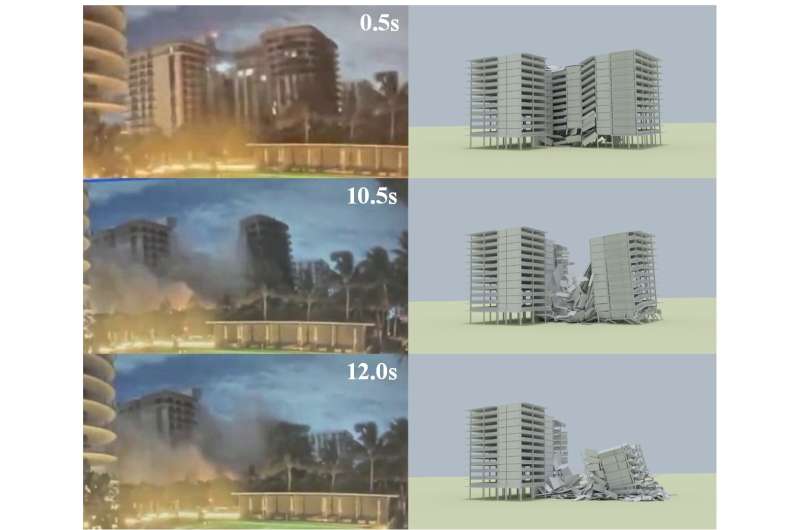Comparison between actual and simulated collapse process. Credit: Andy Slater
On June 24, 2021, at approximately 1:30 a.m. Eastern Daylight Time, Champlain Towers South Condominium, a 12-story 40-year-old reinforced concrete flat plate structure building in the Miami suburb of Surfside, Florida, United States, experienced a sudden partial collapse. Ninety-eight people were confirmed dead and eleven others were injured. What has caused the sudden collapse of this flat plate building?
Professor Xinzheng Lu from the Department of Civil Engineering, Tsinghua University is working toward analyzing the possible causes of the building's collapse and reconstructing the collapse process for a better understanding.
In this study, Professor Lu and his research team analyzed the overall performance and the key components of the collapsed building based on the building design codes. In addition, punching shear and post-punching performances of a typical slab-column joint were studied through the refined finite element analysis. Furthermore, the collapse process was also simulated and visualized using a physics engine.
Through these analyses, several conclusions were reached, including (1) the punching shear strengths of the key joints and the axial compressive strengths of the columns of the collapsed structure are low and unable to meet the requirements of the current design codes; (2) typical slab-column joints have limited strength at the large deformation stage due to poor reinforcement detailing.
In summary, the collapsed structure has a low level of safety margin, robustness, and resistance to progressive collapse, which can inevitably lead to serious consequences if local damage occurs due to unexpected and unforeseeable reasons.
More information: Xinzheng Lu et al, A preliminary analysis and discussion of the condominium building collapse in surfside, Florida, US, June 24, 2021, Frontiers of Structural and Civil Engineering (2021). DOI: 10.1007/s11709-021-0766-0
Provided by Higher Education Press























